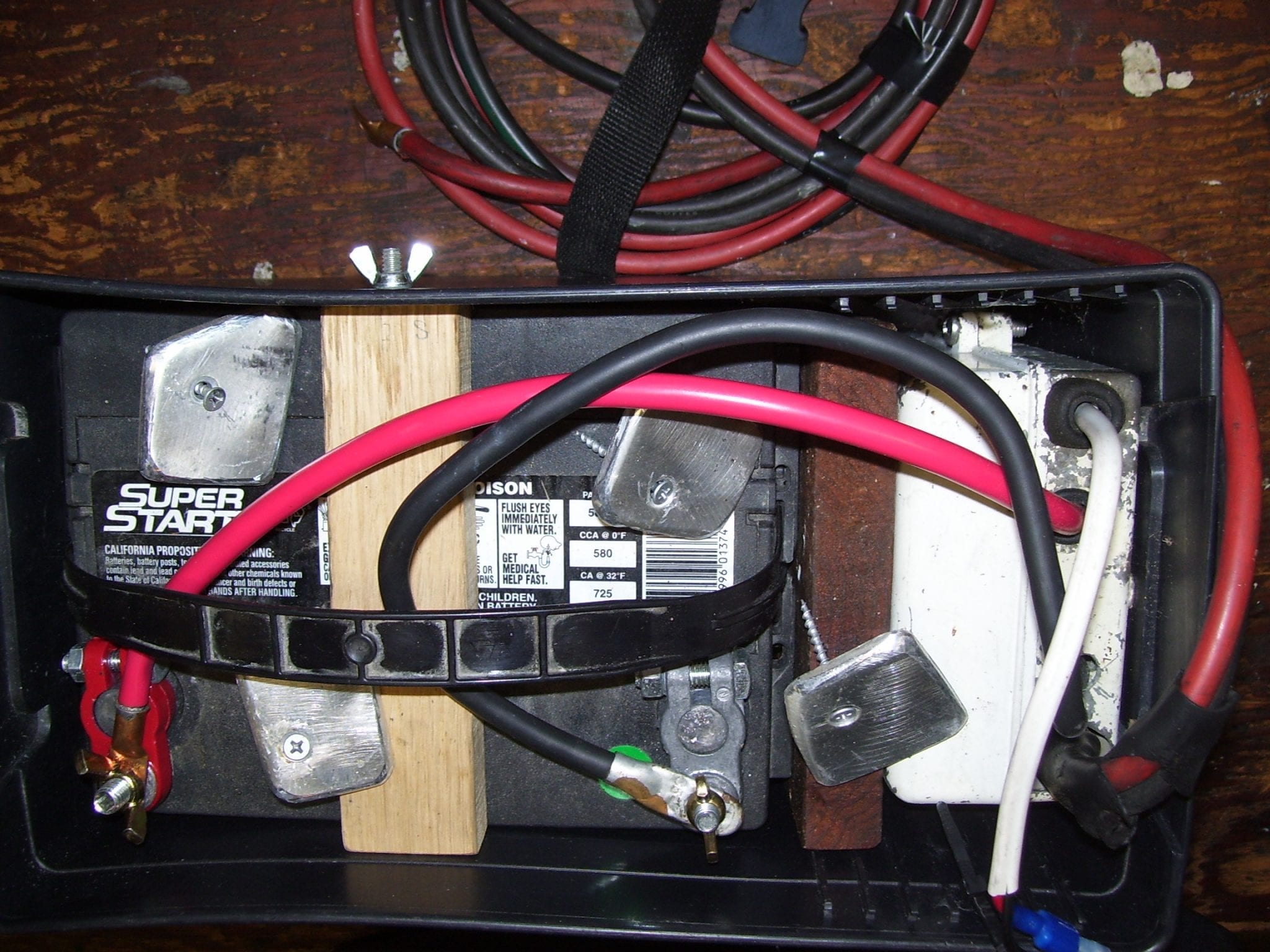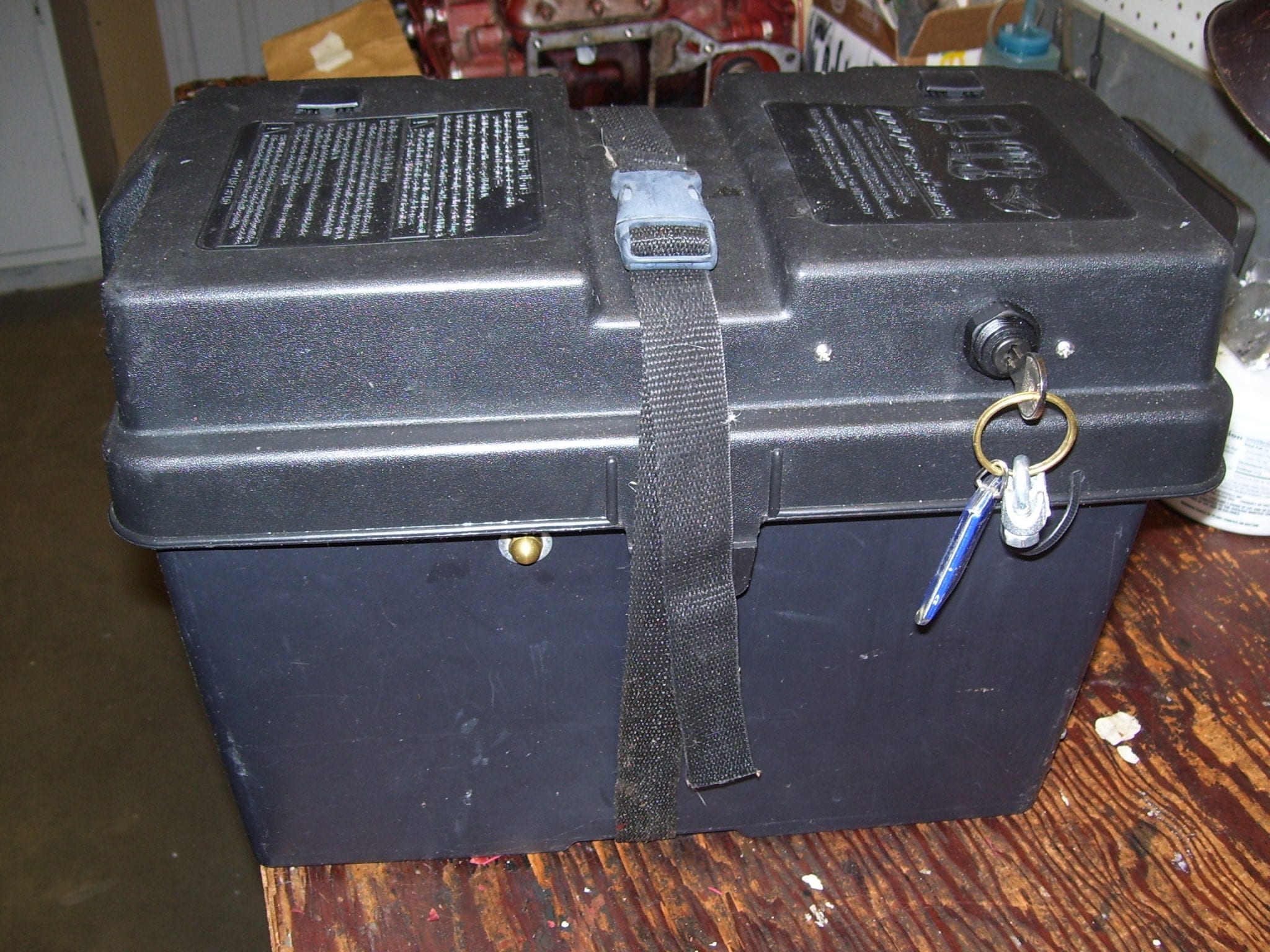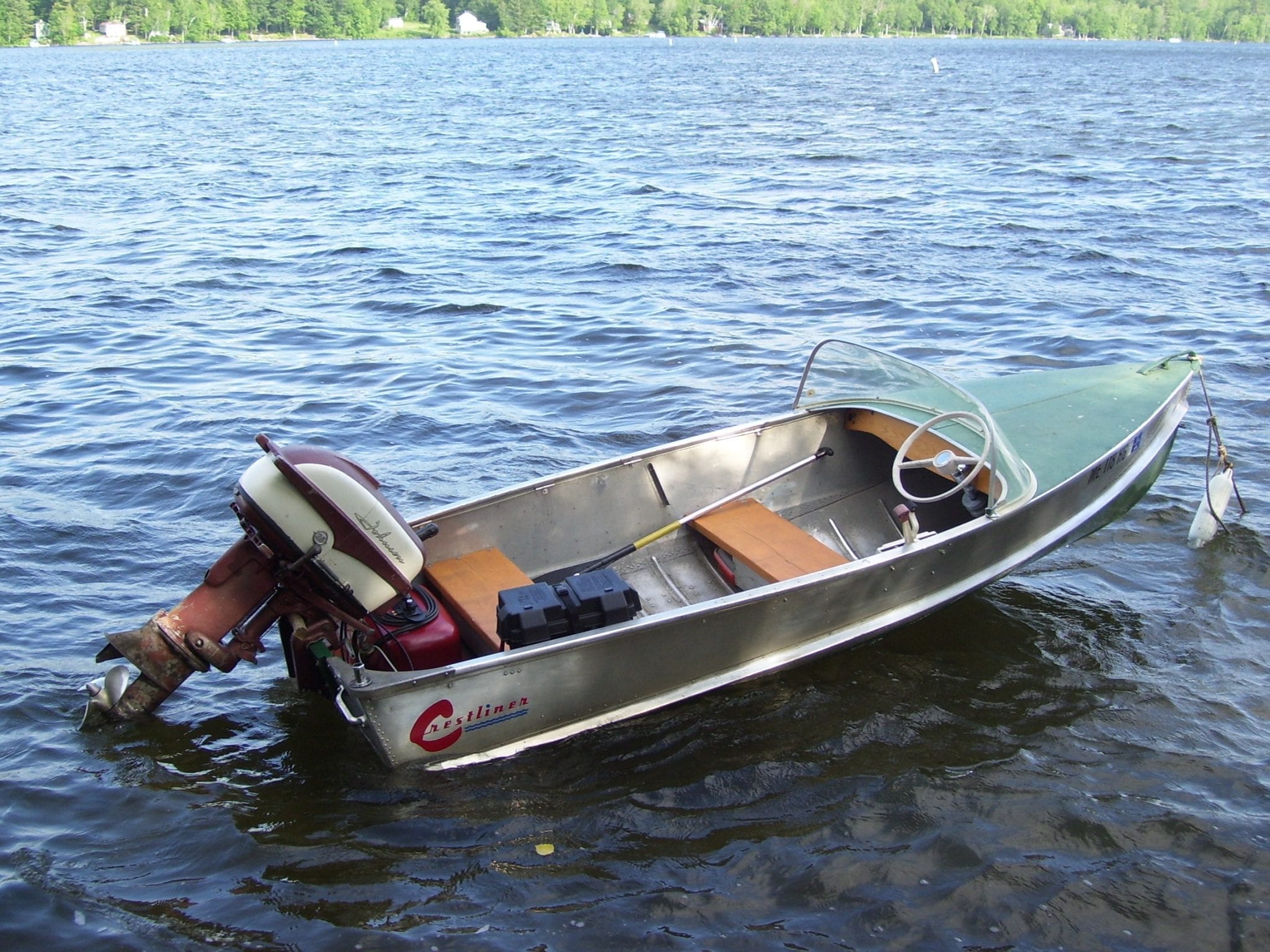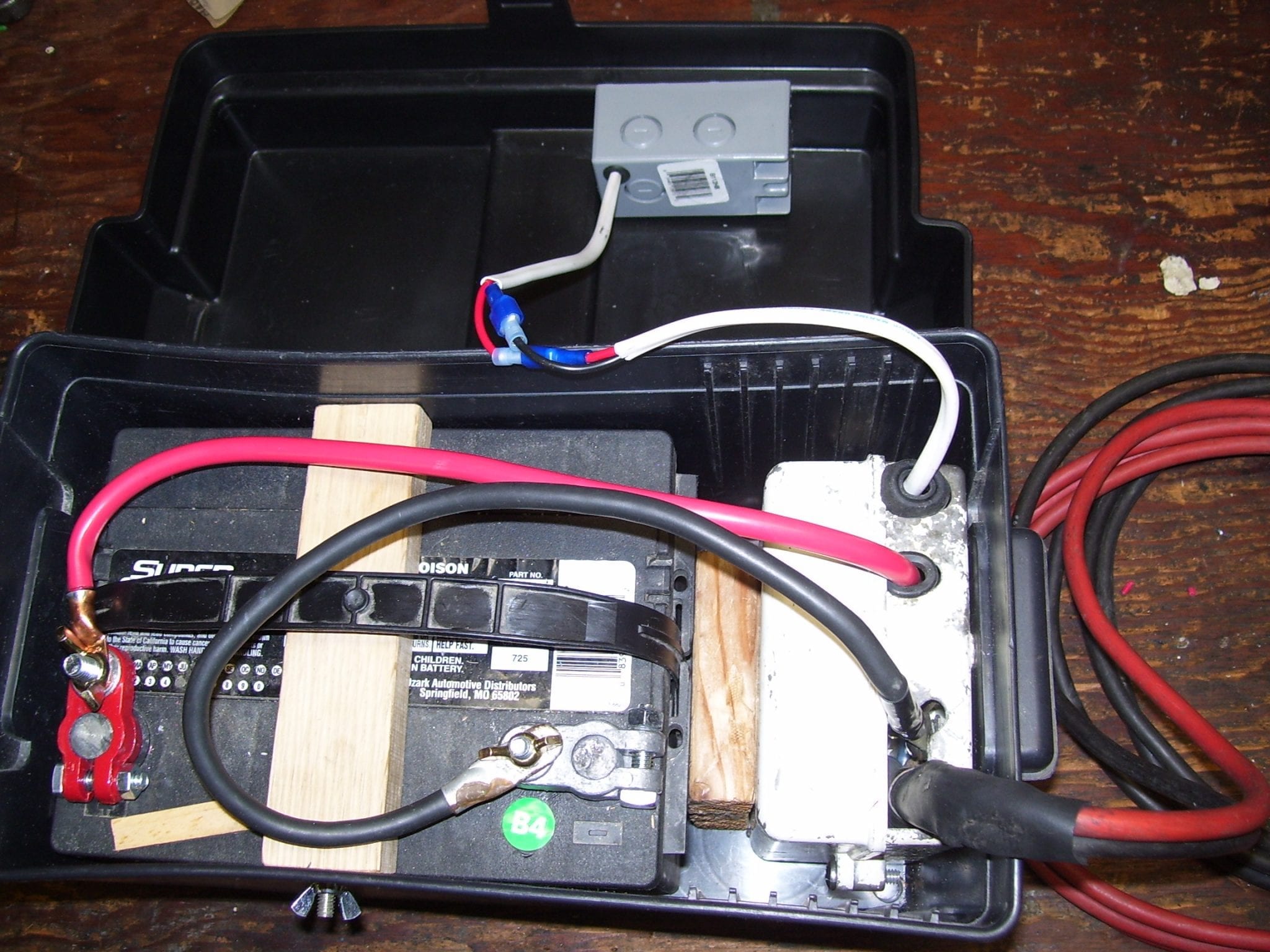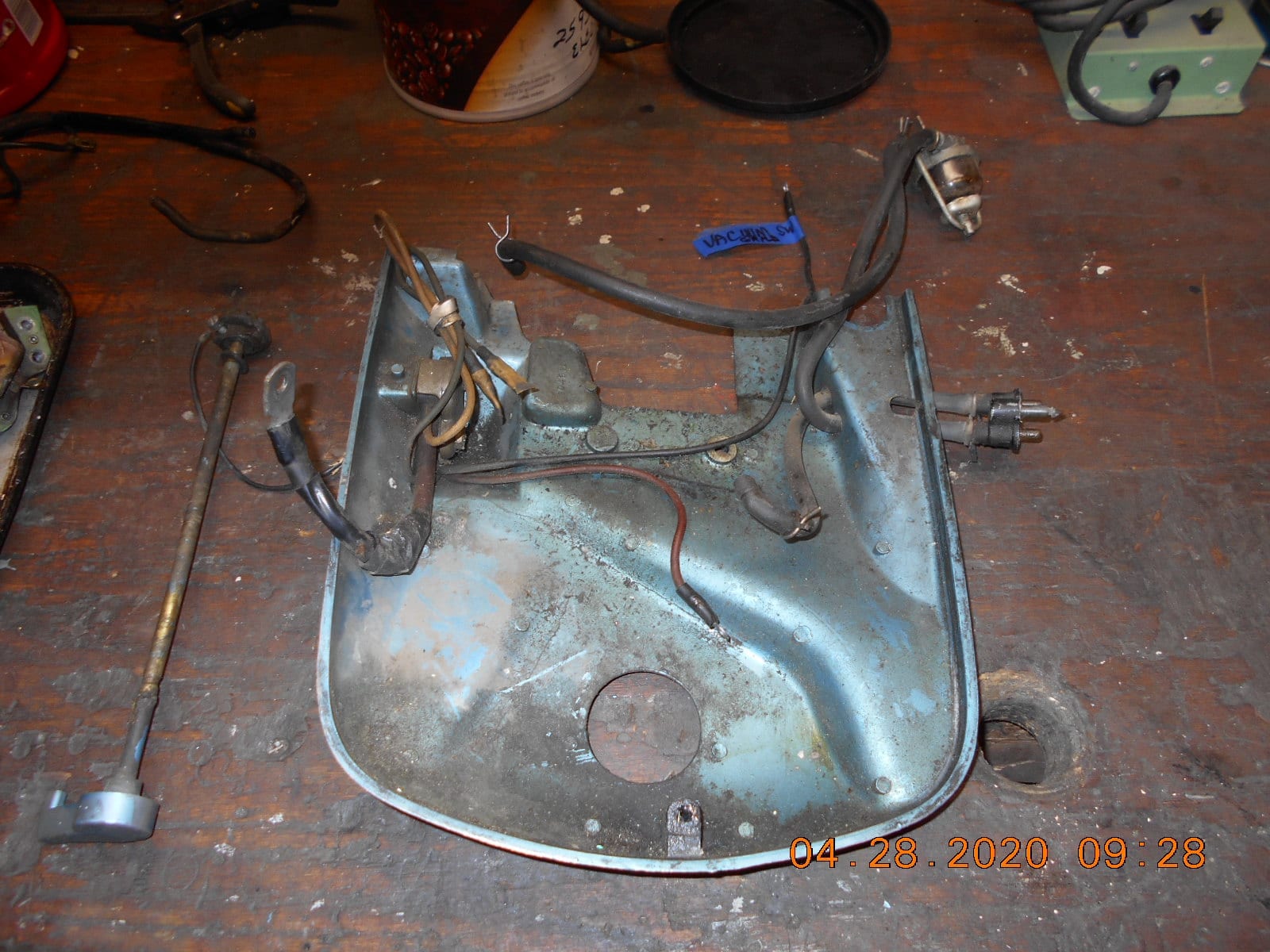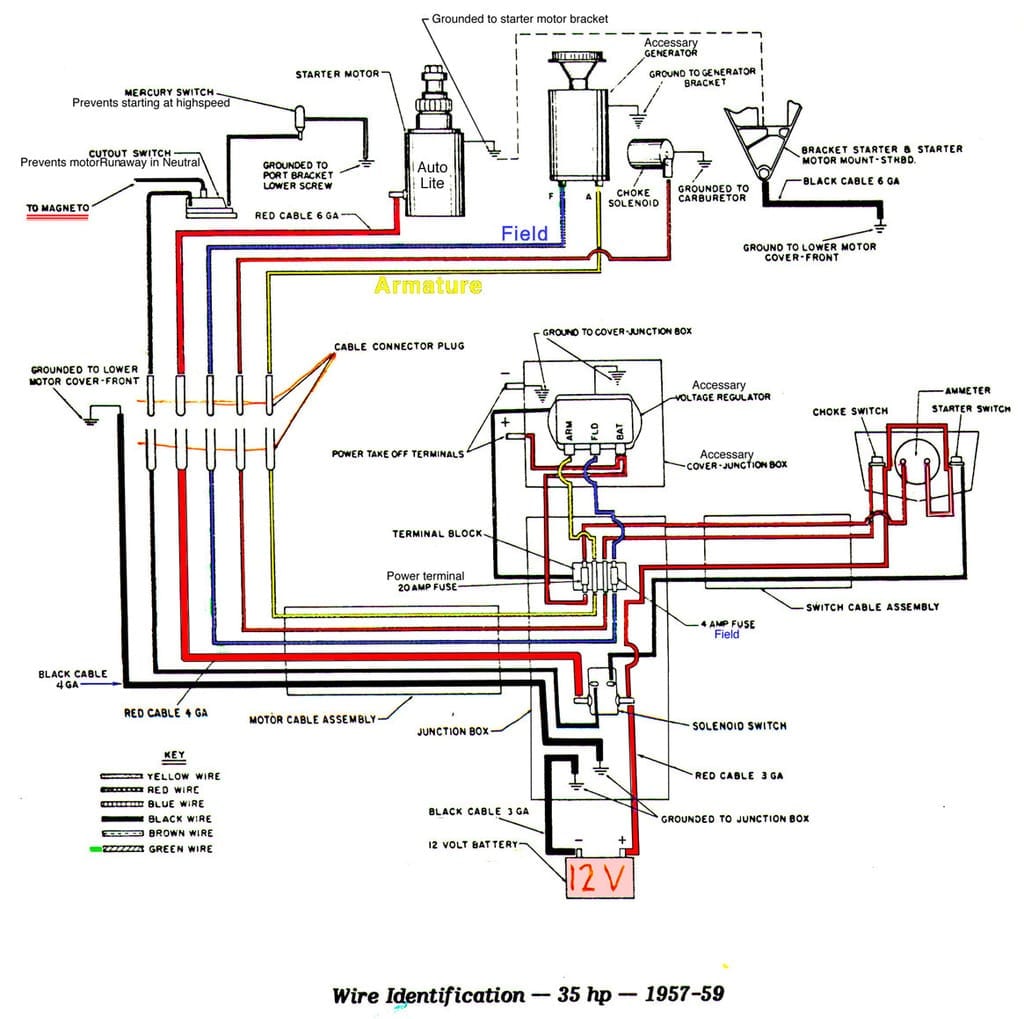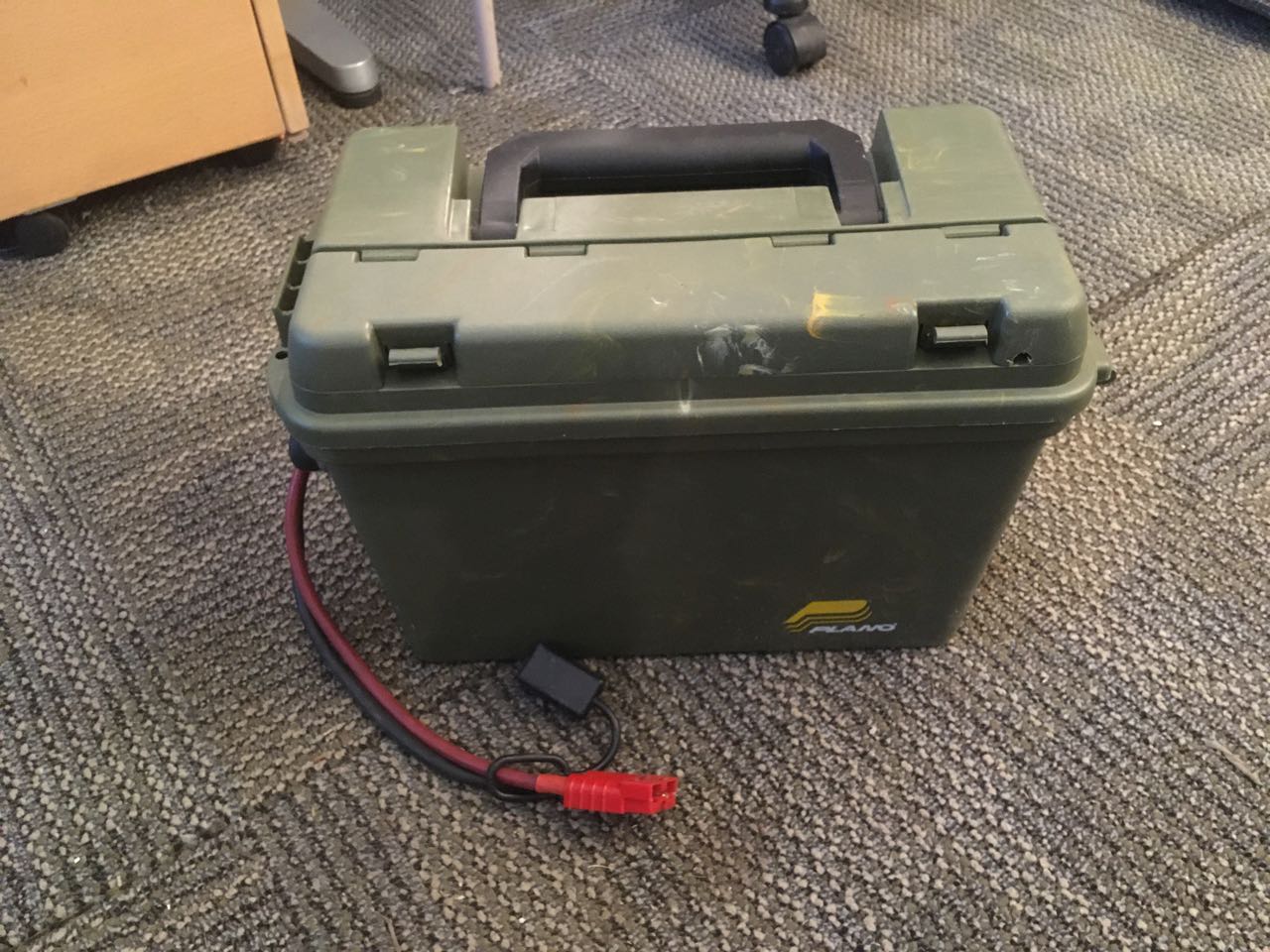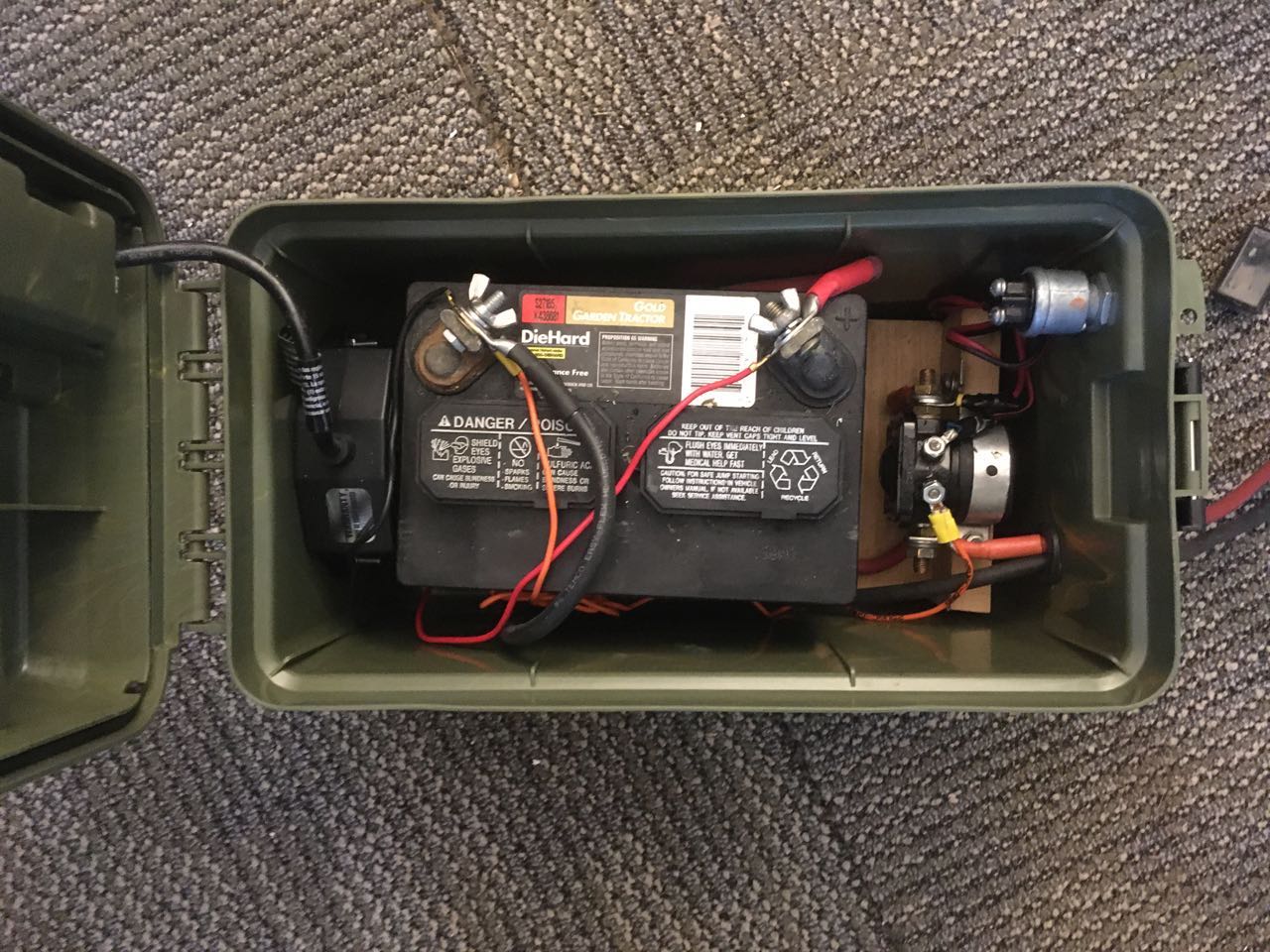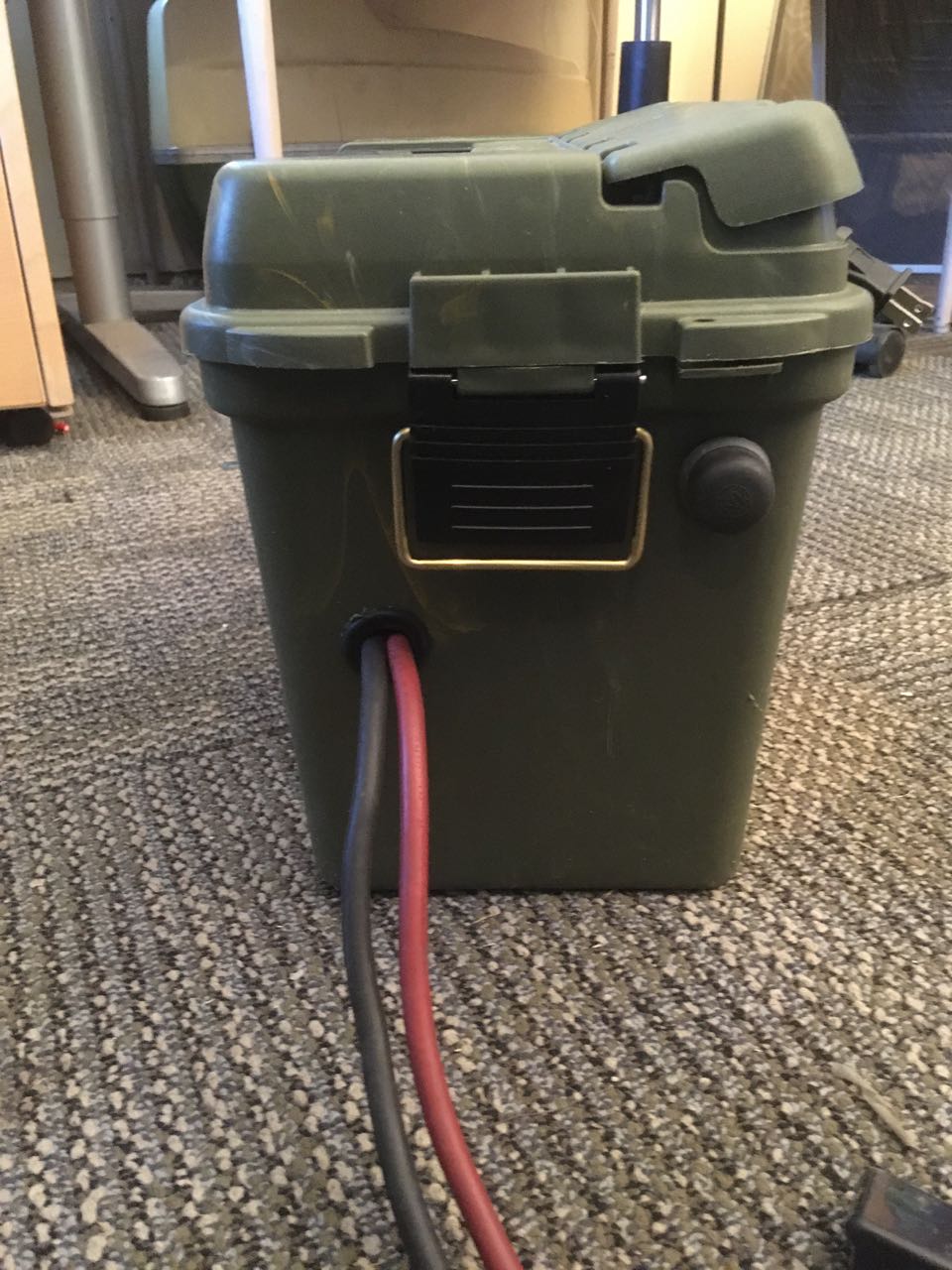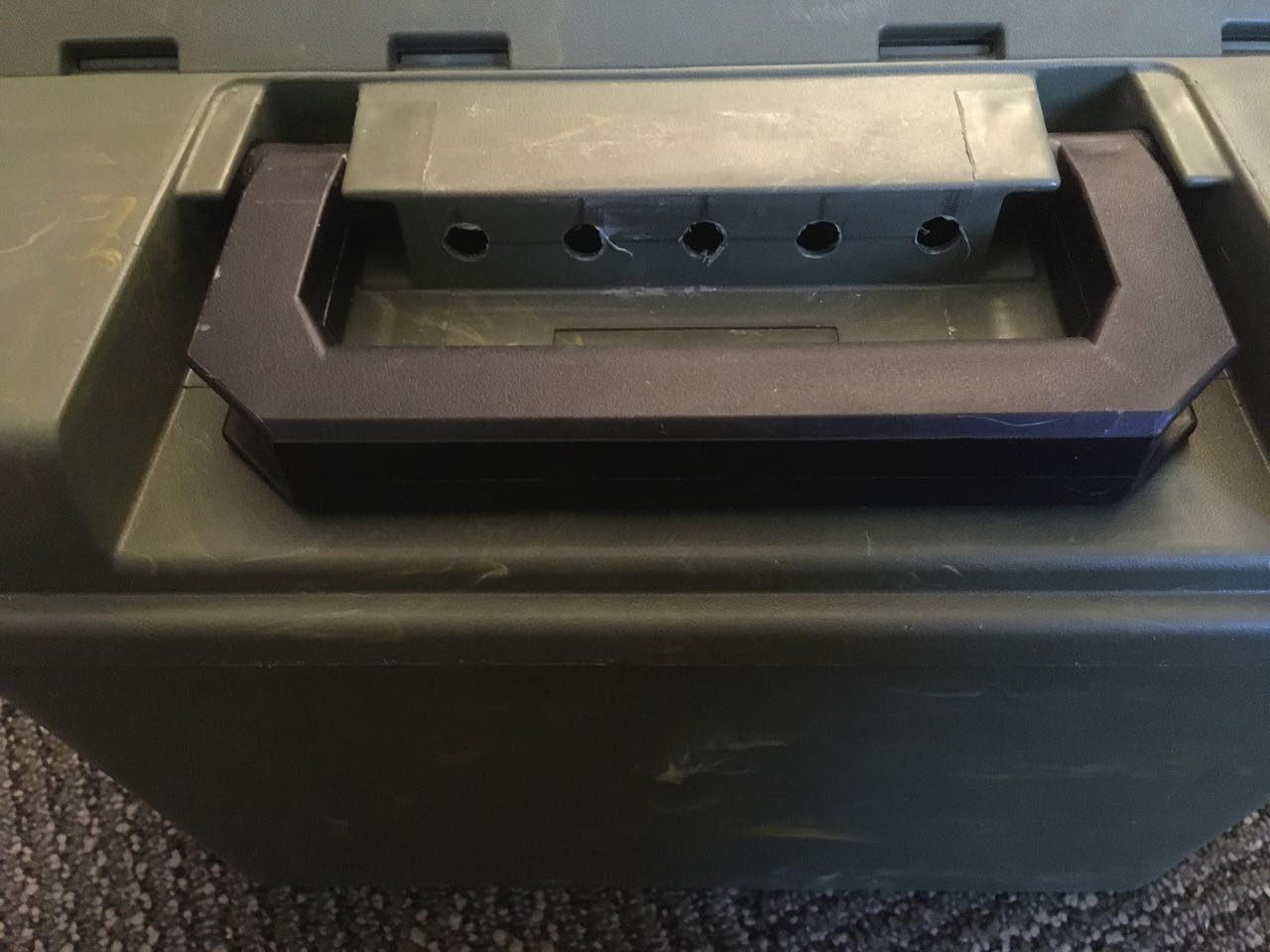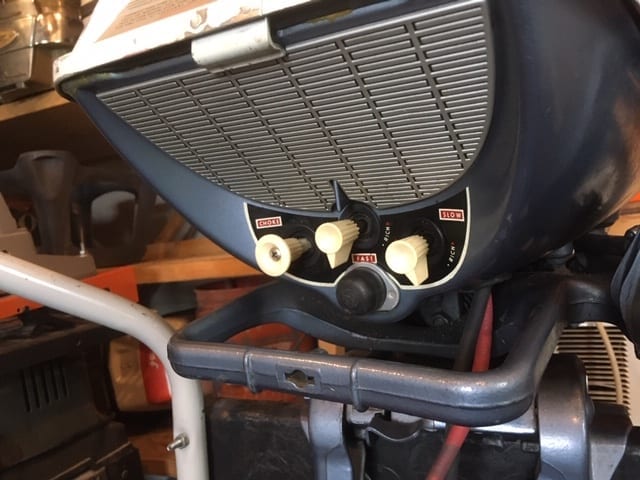Home › Forum › Ask A Member › Homemade OMC Starter Junction Box ideas?
- This topic has 20 replies, 11 voices, and was last updated 4 years, 10 months ago by
 Buccaneer.
Buccaneer.
-
AuthorPosts
-
May 7, 2020 at 3:17 pm #202388
Here is another possible approach. All wiring is between the box and the motor. All very easily removed. Switch mounted on the box. The battery box is screwed thru the bottom into the wooden seat. Inside the box I used a relay box from a later motor. but any Home Depot plastic box would do. The little gray box covers the start switch connections. My boat is small enough so I did not need to mount any buttons up forward. Battery is a full size car battery.
Somehow I can not delete the first attachement. Intended to show the last one instead. 🙂
May 7, 2020 at 5:17 pm #202409Are both engines going to use a 12volt system? If so, you may want to consider deleting the junction box altogether. All that is required is finding a place under the cowl to mount a solenoid. Then, you could just find an old black/red plug boat harness with the battery cables and hard wire it up under the engine cowl. Simply cut off the plug and strip the harness back enough to allow for ample lead length to fit both engines. The older RD does not have a stop circuit, the newer 35hp does, at least I think it does. You would need a key switch with two “m” terminals for the newer engine if your mag plate has the stop leads. You would simply not wire these two leads to anything on the older engine. This method would allow you to have a key/choke switch at the dash, I’m assuming you are using remote controls and a steering wheel….
Just a thought….DMay 7, 2020 at 7:21 pm #202421Thanks for the replies. More to think about, which is a good thing! I didn’t think about
the 57 Big Twin needing a “kill” circuit. Not sure it has one, but in looking at
this photo, still not sure!There’s the kill wire from the vacuum switch to the mag, but that’s only attached
to one set of points.
In the photo, I see a wire I labeled that runs from the harness plug to the vacuum
switch. If this is for the engine kill circuit, it wouldn’t make sense to kill one cylinder.In looking at the wiring diagram, my labeled wire looks like the ground for the starting circuit?
For the record, this motor does not have a generator.Prepare to be boarded!
May 7, 2020 at 7:23 pm #202425olcah, Buc that’s just what I need! Most of the battery’s these days are sealed units. My boat has no front deck. Just need a push button and a place to connect my depth finder. One of these days! Sure glad you started this tread Buc!
dale
May 7, 2020 at 7:35 pm #202428Well, you certainly don’t need a kill circuit, and from the looks of your diagram, the 57 models did not have one. No problem, the engine can be stopped by just retarding the throttle, or activating the electric choke. Not having the kill circuit will make it easier to use a red plug wiring harness. There will be a ground that comes up to the key switch, but it doesn’t have to be used, or connected to the key switch. The black/yellow stop lead wouldn’t be used either…. I’m assuming your engine does not have a generator like the diagram shows. A generator will probably require the junction box to house the regulator and extra wiring….
May 8, 2020 at 9:01 am #202473May 8, 2020 at 11:38 am #202500WaterLoo, that’s another well thought out box.
Is there any mercury switch involved in your set-up?
Is the disconnect terminal the aforementioned
one used on forklifts, etc.?
Thanks.Prepare to be boarded!
May 8, 2020 at 12:23 pm #202501FYI — although it’s been mentioned above,if you’re going to have the battery in the same enclosure as the electrical stuff (solenoid and / or starter button), you must have a sealed (no maintenance) battery or very, very good venting for the enclosure. The charging battery will give off hydrogen gas, which will ignite in the presence of a spark when the H2 concentration is as low as 4%.
May 8, 2020 at 1:14 pm #202507Appreciate the safety comment about venting when charging the battery within the box. It applies too if the motor has a generator. Fortunately a full size battery will start a (no generator) outboard for weeks without recharging. In my case the box is attached to the boat and I remove the battery about every 3rd week to top up the charge on land. Never had a low battery charging it at that interval.
May 9, 2020 at 9:57 am #202599Buccaneer – I primarily use this on a ’63 Fastwin – so no mercury safety switches involved – but I do use this to test my larger motors with the mercury switches – I just hook directly to the starter and motor ground when doing the test.
A search for these keywords will find the parts on Amazon:
Box – Plano 1612 Deep Water Resistant Field Box with Lift Out Tray
Quick Disconnect – Orion Motor Tech 4 Pcs 6-8 Gauge Battery Quick Connect Disconnect
Start Switch – Cole Hersee 90030-BP Push-Button Switch
Wires – Temco 6 Gauge 36in – 5/16 in Hole Sizes Red Solar Battery Cables
Charger – Schumacher SC1300 1.5A 6/12V Fully Automatic Battery MaintainerThe solenoid was just an OMC one I had from a motor I got. OMC 0378444 or similar.
On the wires, you’ll need black for ground and red for power and you’ll need the terminal sizes to match what you have on your motor – to get enough length, you might need to get 2 of each. You also need to solder the ends of the wires into the terminals for the quick disconnects. Crimping alone doesn’t work.
I’ve attached a pic of the motor end. The wires go in through a rubber grommet.
I also drilled holes in the top of the box by the handle to vent the box while charging. You can see that in one of the photos.
-
AuthorPosts
- You must be logged in to reply to this topic.


